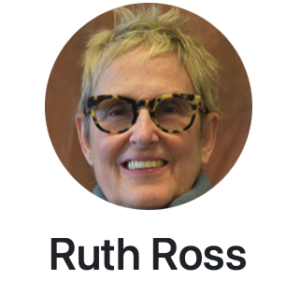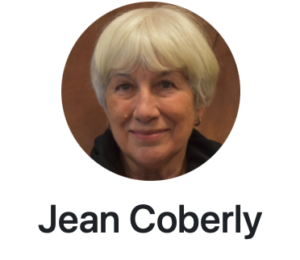

by Ruth Ross; reported by Jean Coberly
On Saturday the 4th of September, Bob was taken with a violent shivering and a very elevated blood pressure. I called 911 and the medics took him by ambulance to Kaiser Sunnyside ER. (Coincidentally, Kaiser is our health service.)
We spent the day in the ER where the staff worked very intensely to determine the cause of the 103.5 fever and mental confusion, since there were no other symptoms at all. After ruling out meningitis, Kaiser admitted him to the hospital where they were able, through a blood culture, locate the source of the infection, which was determined to be Sepsis possibly acquired from a previous day’s dental cleaning.
Within a few hours the situation was under control, and they were administering Vancomycin intravenously twice a day. He was in the hospital one more night and then on Monday the 6th was released home.
 Now this is where it gets interesting: Kaiser DID NOT discharge him. He was still under the hospital’s care, but, within an hour of our coming home, a medic arrived with 3 large cartons of equipment. Among the items were a router (in case we didn’t have sufficient Wi-Fi or there was a power outage) a dedicated iPad which, with a touch, connected him to a nurse and/or a doctor 24 hours a day, a blood pressure cuff which transmitted the readings directly into the iPad and to the monitors, and a direct phone and phone line which would bring an immediate response when the speaker button was pushed. Because Bob needed the Vanco to be dripped, nurses came twice a day to perform this task and monitor the procedure. If there was an unusual symptom such as a rash, me or the nurse could photograph it for the doctors and nurses, it would be received immediately, and they would have a meeting to resolve it.
Now this is where it gets interesting: Kaiser DID NOT discharge him. He was still under the hospital’s care, but, within an hour of our coming home, a medic arrived with 3 large cartons of equipment. Among the items were a router (in case we didn’t have sufficient Wi-Fi or there was a power outage) a dedicated iPad which, with a touch, connected him to a nurse and/or a doctor 24 hours a day, a blood pressure cuff which transmitted the readings directly into the iPad and to the monitors, and a direct phone and phone line which would bring an immediate response when the speaker button was pushed. Because Bob needed the Vanco to be dripped, nurses came twice a day to perform this task and monitor the procedure. If there was an unusual symptom such as a rash, me or the nurse could photograph it for the doctors and nurses, it would be received immediately, and they would have a meeting to resolve it.
During the day there would also be a nurse/medic visit, who would be on hand to draw blood for cultures, counts, etc. The vial would be picked up within the hour by a courier with a refrigerated pack. And one night, quite late, the doctors decided that he MIGHT need a back-up prescription of Amoxicillin tablets. Since Kaiser pharmacies were unavailable that late, they were able to locate a Rite Aid that delivered the pills at 1:00 a.m. At no charge. (Security brought them to us).
Finally on Friday the 10th, it was determined that Bob’s situation was under control, and he was discharged (electronically). All follow up printed matter was on our computers. And there was a specific phone number direct line for any complications that might ensue.
We have learned that this is part of a national innovation called Medically Home. Kaiser refers to it as Hospital at Home. The central agency is out of Boston. Many larger hospitals are now using these services: Mayo, for example, and Adventist just recently joined here in Portland. I believe for many reasons this will be the wave of the future: freeing up hospitals for Covid treatment? I do not know the exact figures but even with all the personnel and extreme choreographing that it required, we are told it is cheaper than a hospital stay.
And for the record, sleeping at home and eating home-cooked meals (even mine) are healing in and of themselves.
(It must be noted, of course, that the particulars of Bob’s condition were such that the Hospital at Home was a suitable solution).
For us here in our little cottage it was a revolutionary experience in health care: we felt secure, well-tended-to, but without the kind of necessary interruptions and annoyances that besiege anyone in a hospital bed. I would like to believe that this is the wave of the future.
Bob has added this thought: if this innovative care becomes more available to Rose Villa residents, he would recommend it to the highest possible degree.